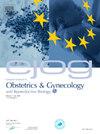The single-cell immune profile throughout gestation and its potential value for identifying women at risk for spontaneous preterm birth
IF 1.5
Q3 OBSTETRICS & GYNECOLOGY
European Journal of Obstetrics and Gynecology and Reproductive Biology: X
Pub Date : 2025-02-06
DOI:10.1016/j.eurox.2025.100371
引用次数: 0
Abstract
Precisely timed immune adaptations, observed in the maternal circulation, underpin the notion of an immune clock of human pregnancy that supports its successful progression and completion at delivery. This immune clock is divided into three immunological phases, with the first phase starting at the time of conception and implantation, shifting into the second phase that supports homeostasis and tolerance throughout pregnancy, and culminating in the last phase of labor and parturition. Disruptions of this immune clock are reported in pregnancy complications such as spontaneous preterm birth. However, our understanding of the immune clock preceding spontaneous preterm birth remains scattered. In this review, we describe the chronology of maternal immune cell adaptations during healthy pregnancies and highlight its disruption in spontaneous preterm birth. With a focus on single-cell cytometric, proteomic and transcriptomic approaches, we review recent studies of term and spontaneous preterm pregnancies and discuss the need for future prospective studies aimed at tracking pregnancies longitudinally on a multi-omic scale. Such studies will be critical in determining whether spontaneous preterm pregnancies progress at an accelerated pace or follow a preterm-intrinsic pattern when compared to those delivered at term.
求助全文
约1分钟内获得全文
求助全文
来源期刊

European Journal of Obstetrics and Gynecology and Reproductive Biology: X
Medicine-Obstetrics and Gynecology
CiteScore
2.20
自引率
0.00%
发文量
31
审稿时长
58 days
 求助内容:
求助内容: 应助结果提醒方式:
应助结果提醒方式:


